Model Village
(2020-)Soft buildings, sewn
with recycled materials,
various sizes


The term Model Village refers to communities once built by wealthy landowners to house their workers, as well as the miniature model village tourist attractions I visited as a child. It may once have evoked an idealised community, but over time these associations have become clouded and contradictory. The inexorable rise in housing inequality, insecurity and homelessness raise questions about what it even means to be part of a physical community now.
Model village extract from Land Ground Earth Soil (2019).
My interest in this springs from previous research for Land Ground Earth Soil, which includes a theory in evolutionary psychology that 150 is found to be the optimal number of people who can live in a community together, based on trust and moral obligation. Historic records reveal that 150 was not only the average village size in the 18th century, but also in the Domesday Book of 1086. Interestingly this is also found to apply to social media, irrespective of how many ‘friends’ or ‘followers’ a person appears to have.
Unlike digital communities, which pervade so much of our collective consciousness; physical communities, as in the geographic places where people dwell, can seem arbitrary and undynamic by comparison. I use the word ‘dwell’ here advisedly to mean where a person lives, works, resides or exists.
Unlike digital communities, which pervade so much of our collective consciousness; physical communities, as in the geographic places where people dwell, can seem arbitrary and undynamic by comparison. I use the word ‘dwell’ here advisedly to mean where a person lives, works, resides or exists.
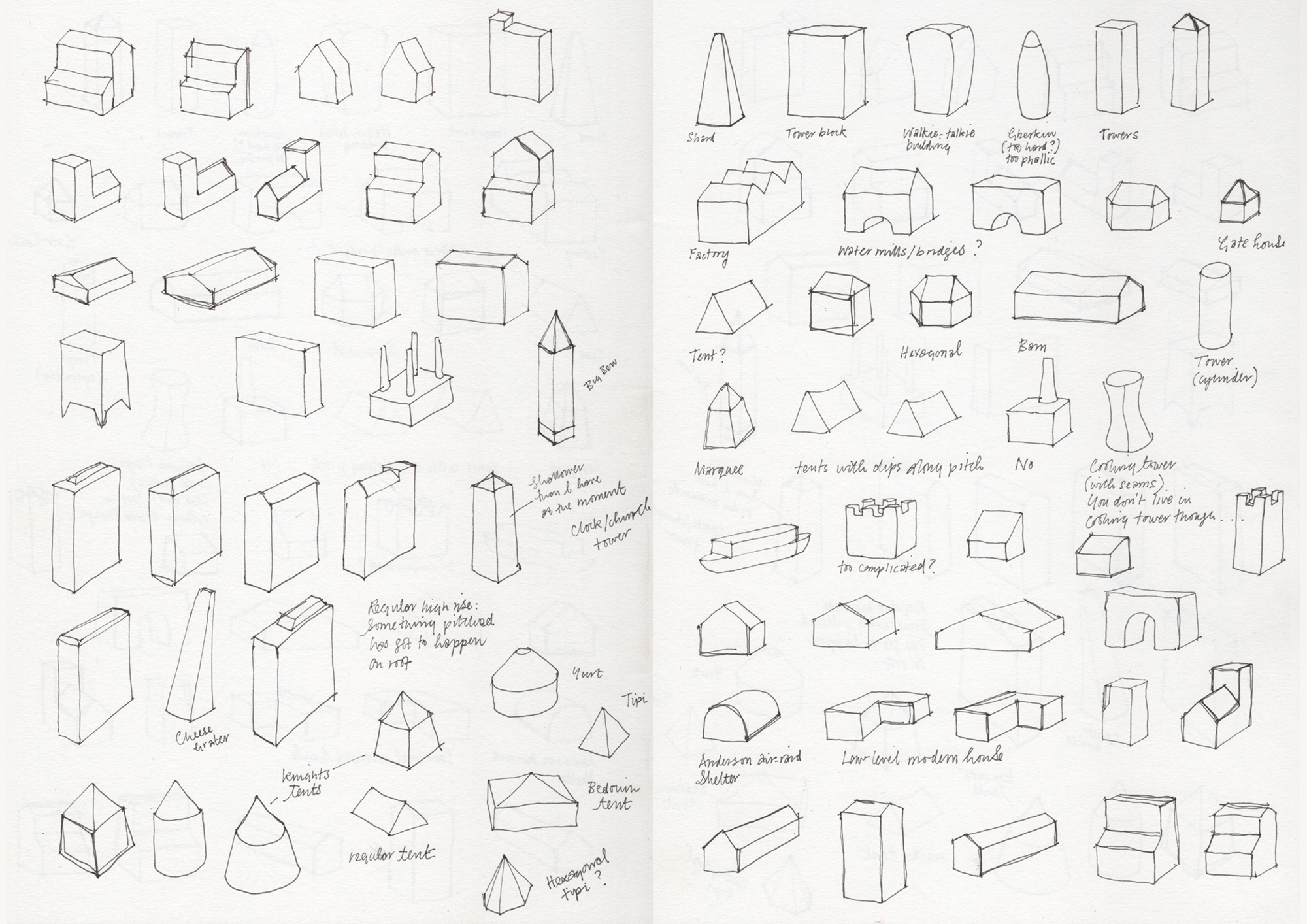
Sketchbook pages.
The project uses abstracted forms of buildings and structures, stripping away as much detail as possible while retaining recognisable proportions. This process of creating building shapes that are abstract yet familiar also explores the prevalance of the pitched roof as an important symbol of shelter, and includes temporary static structures like tents, whose uses range from emergency housing to festivals and glamping.
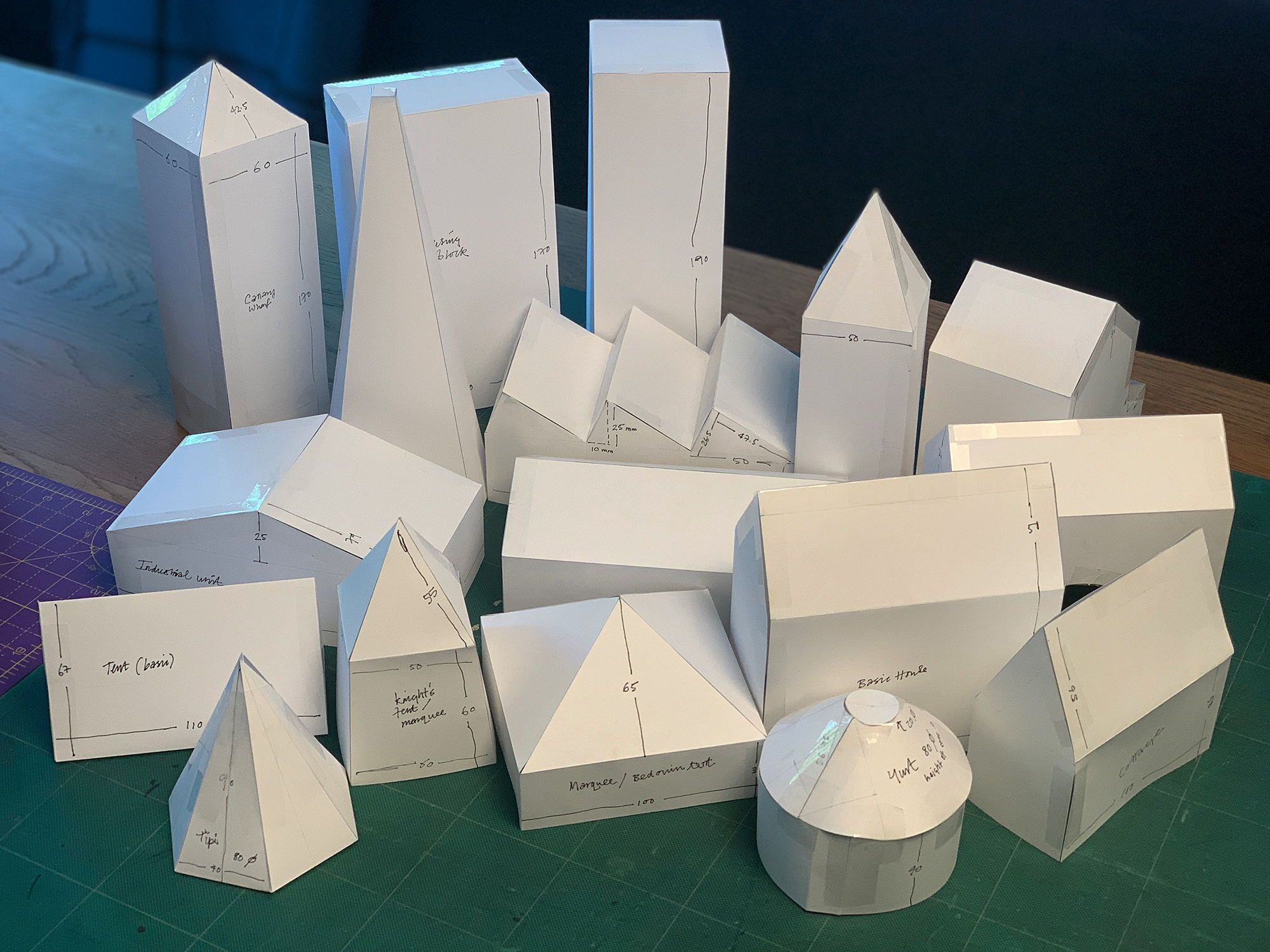
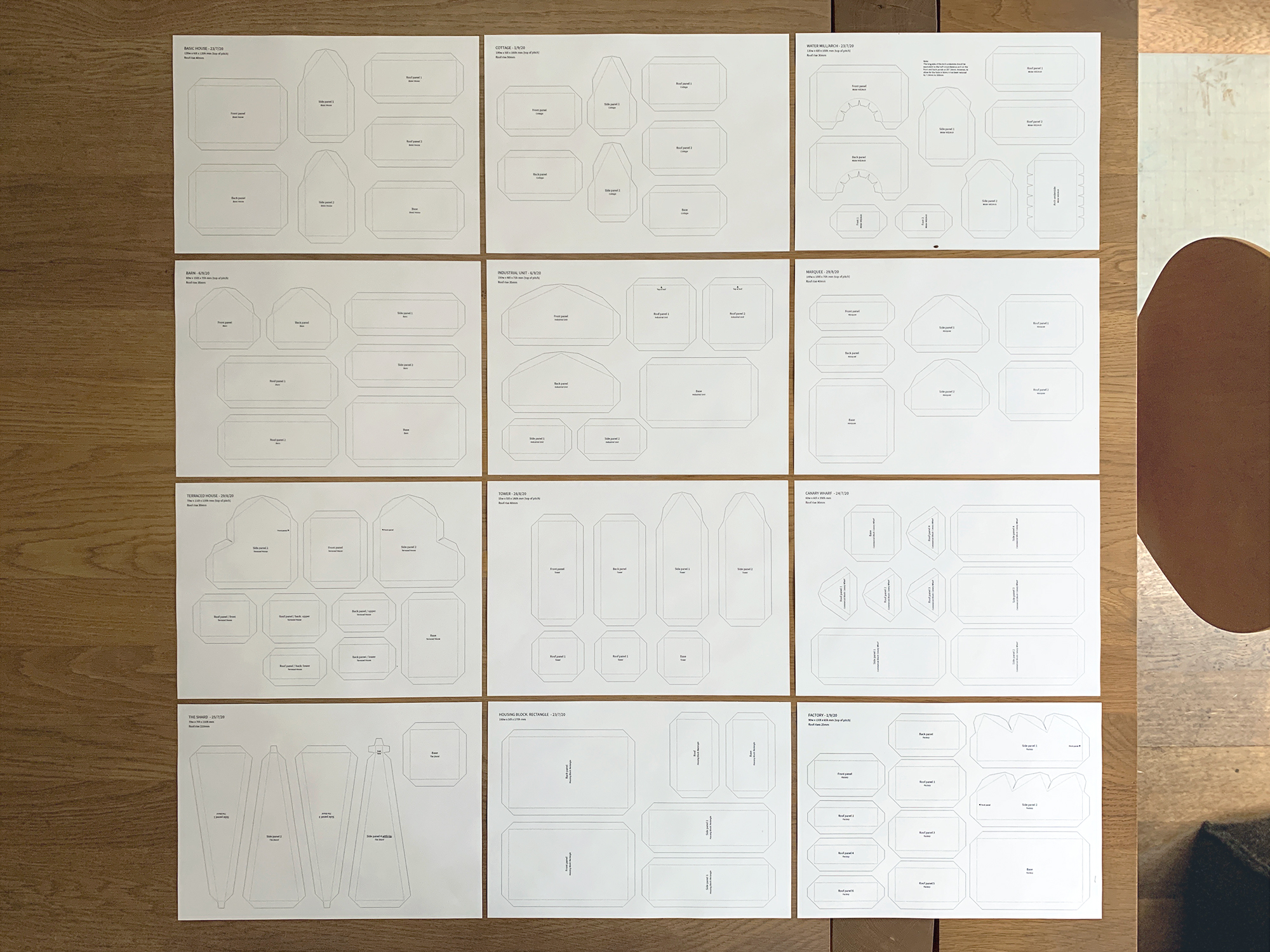
The models represent types or categories of buildings and structures (with the occasional specific exception). They are out of scale with their counterparts in the real world yet retain their recognisable proportions. The absence of scale strips away the power that comes with size from the larger buildings. It allows them to viewed objectively as mere shapes, as objects that can now relate directly with each other - in this new model village.

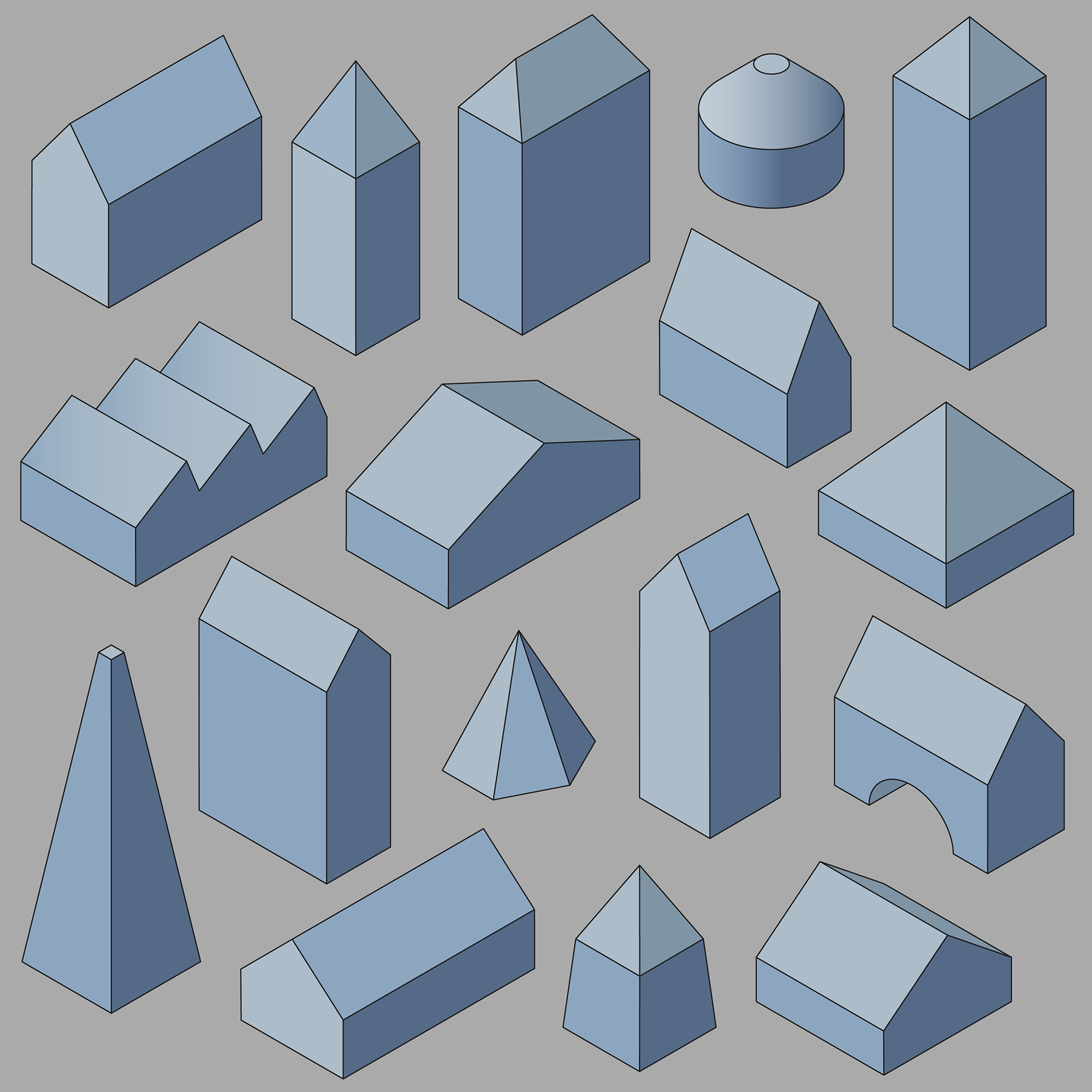

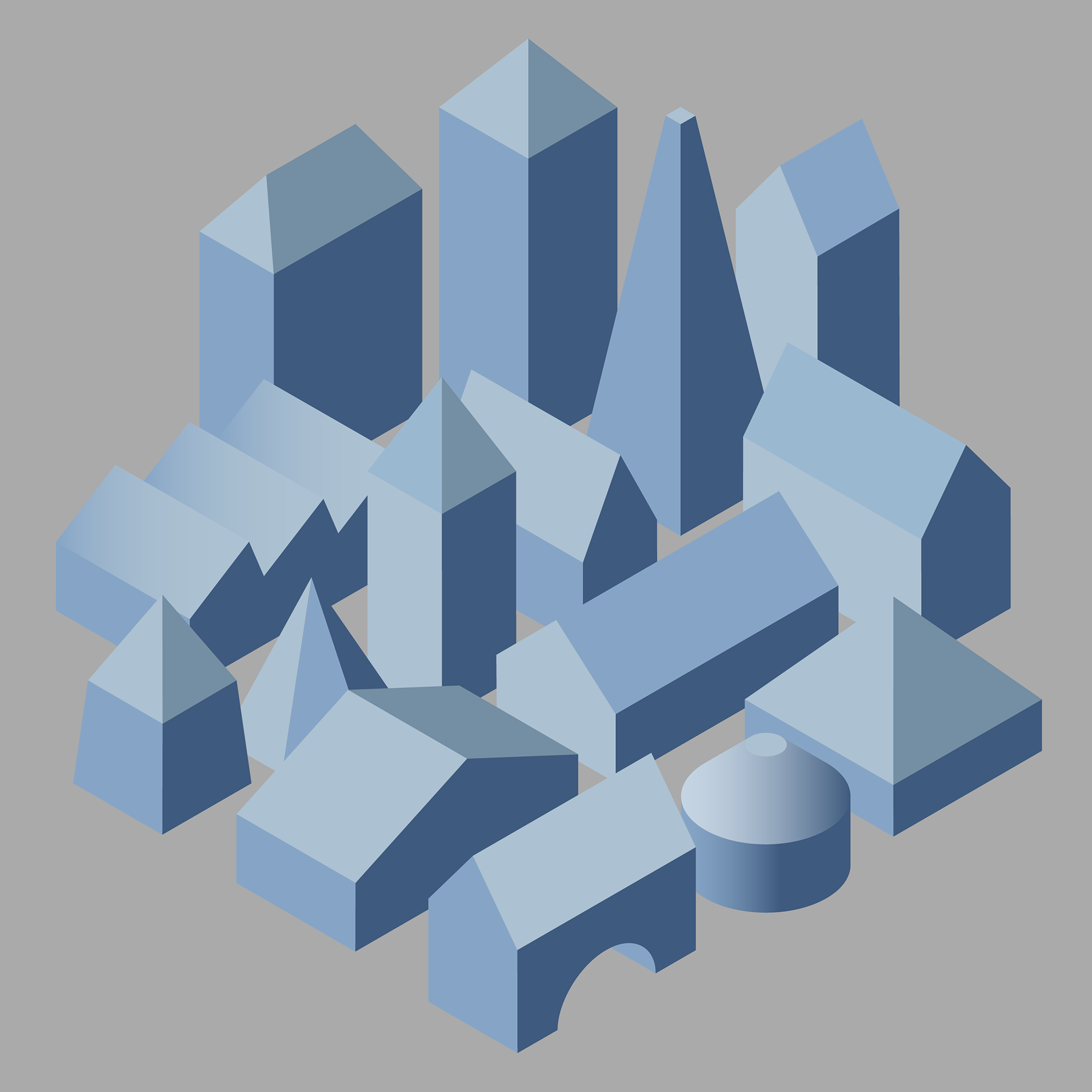

Themes of impermanence in temporary structures like tents informed my approach of making soft buildings, with materials that address related issues of unsustainable consumerism such as fast fashion and textile waste.

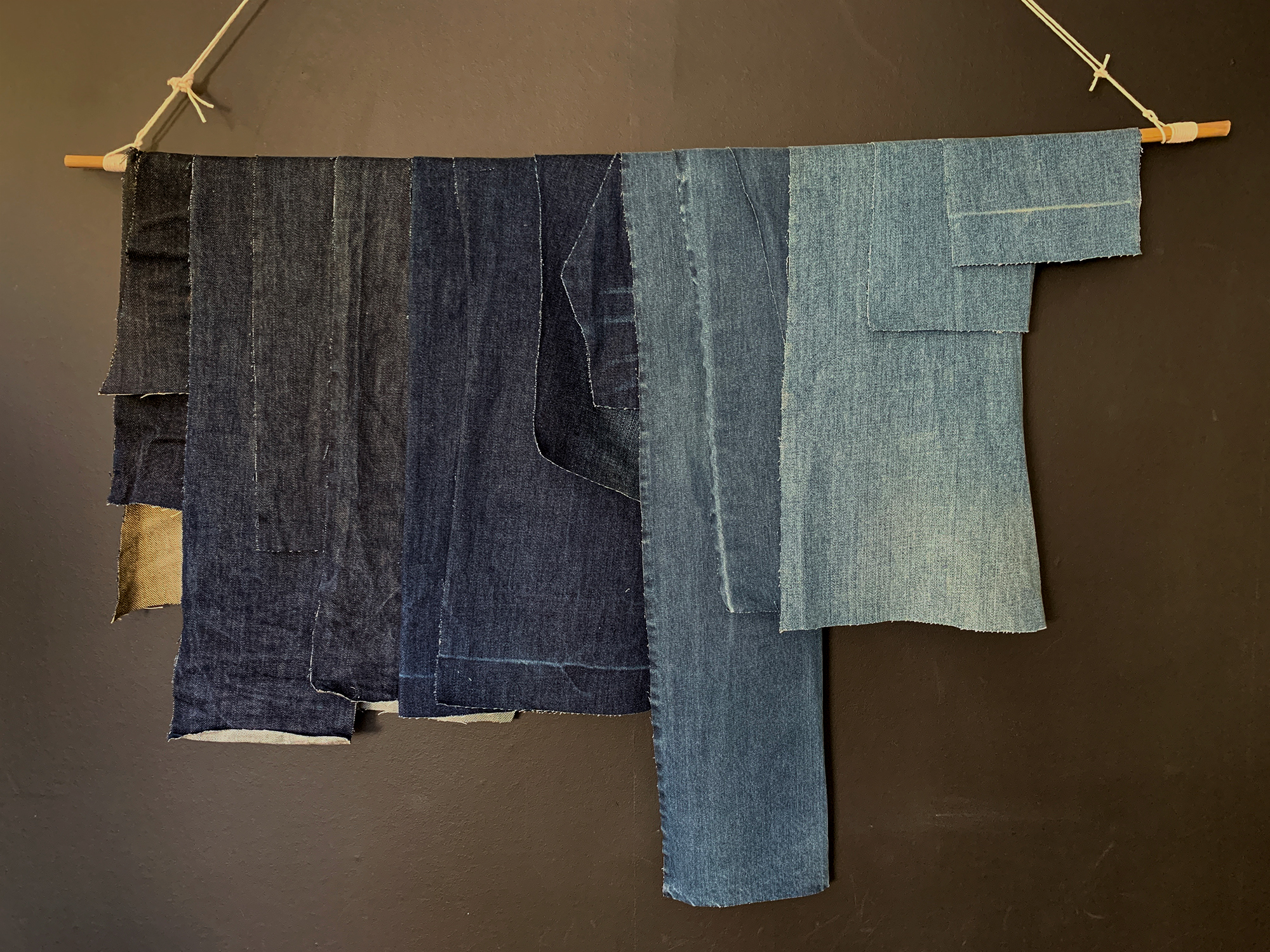

The buildings are made with reused denim taken from clothing bought at homelessness charities such as Shelter and Crisis, and filled with recycled knitting wool from a Scottish social enterprise.




I remove the fronts and backs of the denim jean legs, leaving behind the waistband, pockets and seams. Collected together, the remaining short shorts take on a comedic uniformity. I keep all the offcuts, and this process of cutting and removing brings to mind the graphic posters I see of butchers’ meat cuts, so I make my own version.
 Denim jean ‘cuts’.
Denim jean ‘cuts’. The denim bears the marks and scars of previous lives, and is patched together to reduce waste. The buildings look like soft furnishings, reminiscent of fancy homeware shop cushions that speak to our desire for cosiness and wellbeing, for hygge - perhaps as comfort in these divided and insecure times. They purposefully embrace the project’s ambiguity between art and product, reflecting my own practice as artist and designer.




These are some of the work in progress pictures. They will be regularly updated as the model village grows. You can also view project updates in Process and by following _model_village_.
1 Family photo and still from Land Ground Earth Soil (2019).